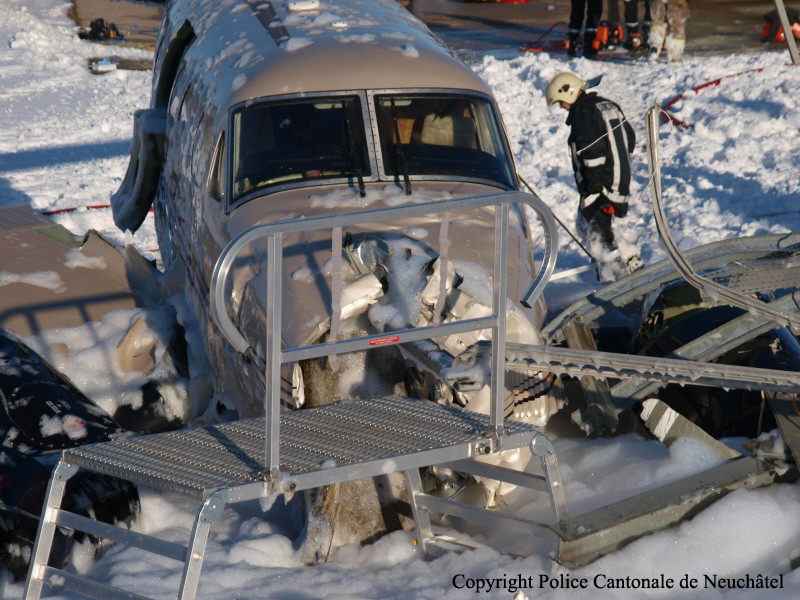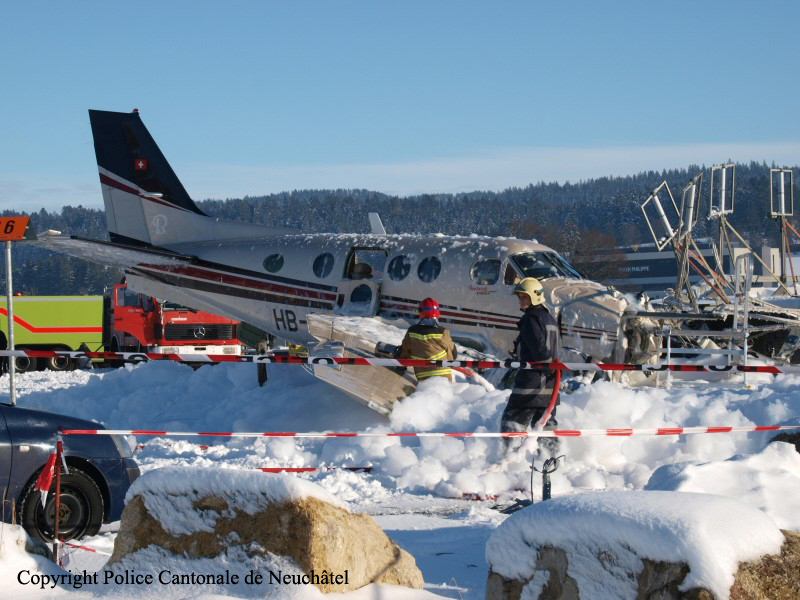Mishap of a Fokker F27 Friendship 500F in Paris-Roissy-CDG
Date & Time:
Oct 25, 2013 at 0125 LT
Registration:
I-MLVT
Survivors:
Yes
Schedule:
Paris - Dole
MSN:
10373
YOM:
1968
Flight number:
MNL5921
Crew on board:
2
Crew fatalities:
Pax on board:
0
Pax fatalities:
Other fatalities:
Total fatalities:
0
Circumstances:
The crew was performing a night mail flight from Paris-Roissy-CDG Airport to Dole-Jura (Tavaux) Airport on behalf of Europe Airpost. Shortly after takeoff, while climbing to an altitude of 1,000 feet, the left propeller detached and impacted the left part of the fuselage, causing a large hole. The crew declared an emergency and was cleared for an immediate return. The aircraft landed safely less than 10 minutes later and was parked on the apron. Both pilots were uninjured and the aircraft was damaged beyond repair. The propeller was found in an open field in Mesnil-Amelot, near the airport. Nobody on ground was injured.
Probable cause:
The n°2 propeller blade root on the left engine failed due to fatigue, resulting in separation from the propeller hub and then interaction with the n°1 blade and its disconnection from the propeller hub. The imbalance created by the loss of these two blades led to the front part of the engine being torn off. The cause of the fatigue cracking could not be determined with certainty. The following may have contributed to the fatigue fracture of the propeller blade root:
- Insufficient preloading of the propeller, increasing the stress exerted on it. The lack of maintenance documentation made it impossible to determine the preload values of the bearings during the last general overhaul;
- The presence of manganese sulphide in a heavily charged area of the propeller. The presence of this sulphide may have generated a significant stress concentration factor, raising the local stress level.
The tests and research carried out as part of this investigation show that the propeller blade root is made of a steel whose microstructure and composition are not optimal for fatigue resistance. However, the uniqueness of the rupture more than 50 years after commissioning makes it unlikely that the rate of inclusions, their distribution, size, or sulphur content of the propeller is a contributing factor in the accident.
- Insufficient preloading of the propeller, increasing the stress exerted on it. The lack of maintenance documentation made it impossible to determine the preload values of the bearings during the last general overhaul;
- The presence of manganese sulphide in a heavily charged area of the propeller. The presence of this sulphide may have generated a significant stress concentration factor, raising the local stress level.
The tests and research carried out as part of this investigation show that the propeller blade root is made of a steel whose microstructure and composition are not optimal for fatigue resistance. However, the uniqueness of the rupture more than 50 years after commissioning makes it unlikely that the rate of inclusions, their distribution, size, or sulphur content of the propeller is a contributing factor in the accident.
Final Report:















